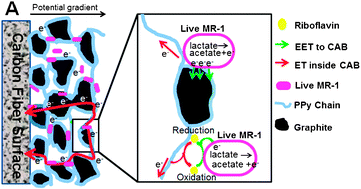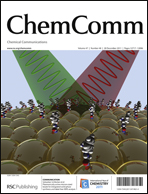Conductive artificial biofilm dramatically enhances bioelectricity production in Shewanella-inoculated microbial fuel cells†
Abstract
A new strategy of electrogen immobilization was developed to construct a conductive artificial biofilm (CAB) on an anode of a microbial


 Please wait while we load your content...
Please wait while we load your content...